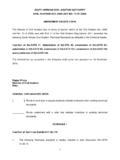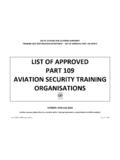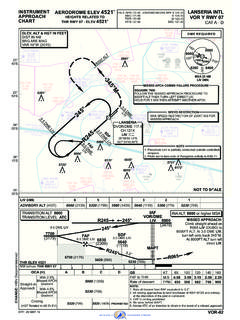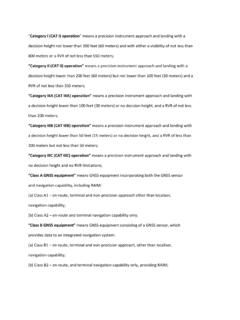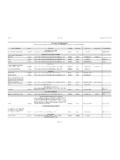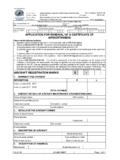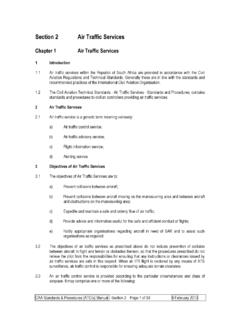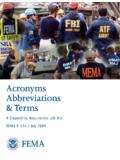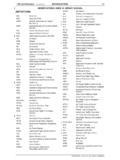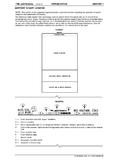Transcription of CIVIL AVIATION REGULATIONS 2011 final version April 2012
1 DEPARTMENT OF TRANSPORT. No R. June 2012. CIVIL AVIATION ACT, 2009 (ACT NO 13 OF 2009). CIVIL AVIATION REGULATIONS , 2011. The Minister of Transport has under section 155(1) of the CIVIL AVIATION Act, 2009, (Act No. 13 of 2009) made the REGULATIONS in the schedule hereto. SCHEDULE. CIVIL AVIATION REGULATIONS , 2011. TABLE OF CONTENTS. Part 1: General provisions Part 11: Procedures for making REGULATIONS and technical standards, granting exemptions and notifying differences Part 12: AVIATION accidents and incidents Part 21: Certification procedures for products and parts Part 24: Airworthiness: Non-type certificated aircraft Part 34: Engine emission certification Part 36: Noise certification Part 43: General maintenance rules Part 44: Maintenance rules non-type certificated aircraft Part 47: Registration and marking Part 48.
2 Leasing of aircraft 1. Part 61: Pilot licensing Part 62: National pilot licensing Part 63: Flight engineer licensing Part 64: Cabin crew licensing Part 65: Air traffic service personnel licensing Part 66: Aircraft maintenance engineer licensing Part 67: Medical certification Part 68: Glider pilot licensing Part 69: Free balloon pilot licensing Part 91: General operating and flight rules Part 92: Conveyance of dangerous goods Part 94: Operation of non-type certificated aircraft Part 96: Commercial operation of non-type certificated aircraft Part 105: Operation of parachutes Part 108: Air cargo security Part 109: AVIATION security training organisations Part 110: AVIATION security screener certification Part 111: AVIATION security Part 112: Aircraft passenger identification Part 121: Air transport operations: Carriage on aeroplanes of more than 19 passengers or cargo Part 127: Commercial air transport and general AVIATION operations: Helicopters Part 133.
3 Helicopter external load operations Part 135: Air transport operations: Small aeroplanes 2. Part 136: Air transport operations: Commercial operation of free balloons Part 137: Agricultural operations Part 138: Air ambulance operations Part 139: Aerodromes and heliports Part 140: Safety management system Part 141: AVIATION training organisations Part 145: Aircraft maintenance organisations Part 147: Design organisations for products, parts and appliances Part 148: Manufacturing organisations Part 149: AVIATION recreation organisations Part 171.
4 Aeronautical telecommunication service providers (electronic services organisation). Part 172: Airspace and air traffic service Part 173: Procedure design organisations Part 174: Meteorological information service Part 175: Aeronautical information services Part 176: Allocation of radio telephony (RTF) call signs, 3-letter aircraft designators and location indicators Part 177 ICAO aeronautical charts Part 185: Enforcement Part 187: Fees and charges Part 188: Administration PART 1: GENERAL PROVISIONS.
5 CONTENTS. SUBPART 1: DEFINITIONS AND abbreviations . 3. Definitions abbreviations SUBPART 2: UNITS OF MEASUREMENTS. Units of measurement SUBPART 1: DEFINITIONS AND abbreviations . Definitions In these REGULATIONS , any word or expression to which a meaning has been assigned in the Act shall have that meaning and, unless the context otherwise indicate . ab initio , when referring to flight training, means the practical training required towards the first issue of a national or PPL, issued in terms of Part 61 or Part 62, or for the endorsement of such a licence with an additional category of aircraft, and for the purpose of regulation excludes cross-country flight training.
6 ACAS current refers to a pilot that has either undergone ACAS II initial training or ACAS II. renewal training within the prescribed period;. ACAS cyclic training means training conducted in accordance with an ACAS II syllabus as part of an approved training programme of which part of the tests and checks are subject to approval by the Director;. ACAS initial training means training in accordance with the initial training component of an ACAS II syllabus;. ACAS instructor means an appropriately rated flight instructor who is an ACAS current pilot.
7 ACAS renewal training means training in accordance with the renewal training component of an ACAS II syllabus;. ACAS syllabus means a syllabus of training in the use of ACAS II;. accelerate-stop distance available means the length of the take-off run available plus the length of stopway, if such stopway is declared available and is capable of bearing the mass of the aeroplane under the prevailing operating conditions;. access control means the security procedure applied to ensure that only persons authorised, authorised vehicles and authorised items carried by such persons or transported in such vehicles are allowed access into the premises or zone being controlled.
8 4. accident includes an occurrence associated with the operation of an aircraft which, in the case of a manned aircraft takes place between the time any person boards the aircraft with the intention of flight until such time as all such persons have disembarked, or in the case of an unmanned aircraft, takes place between the time the aircraft is ready to move with the purpose of flight until such time it comes to rest at the end of the flight and the primary propulsion system is shut down, during which.
9 (a) a person is fatally or seriously injured as result of . (i) being in the aircraft;. (ii) direct contact with any part of the aircraft, including parts which have become detached or are released from the aircraft; or (iii) direct exposure to jet blast, rotor or propeller wake, except when the injuries are from natural causes, self-inflicted or inflicted by other persons, or when the injuries are to stowaways hiding outside the areas normally available to passengers and flight crew; or (b) the aircraft sustains damage or structural failure which.
10 (i) adversely affects the structural strength, performance or flight characteristics of the aircraft; and (ii) would normally require major repair or replacement of the affected component, except for engine failure or damage when the damage is limited to a single engine, ( including its cowlings or accessories), to propellers, wing tips, antennae, probes, vanes, tyres, brakes, wheels, fairings, panels, landing gear doors, windscreens, the aircraft skin (such as small dents or puncture holes), or for minor damages to main rotor blades, tail rotor blades, landing gear, and hose resulting from hail or bird strike (including holes in the radome); or (c) the aircraft is still missing after an official search has been terminated and the wreckage has not been located; or (d) the aircraft is in a place where it is completely inaccessible.
